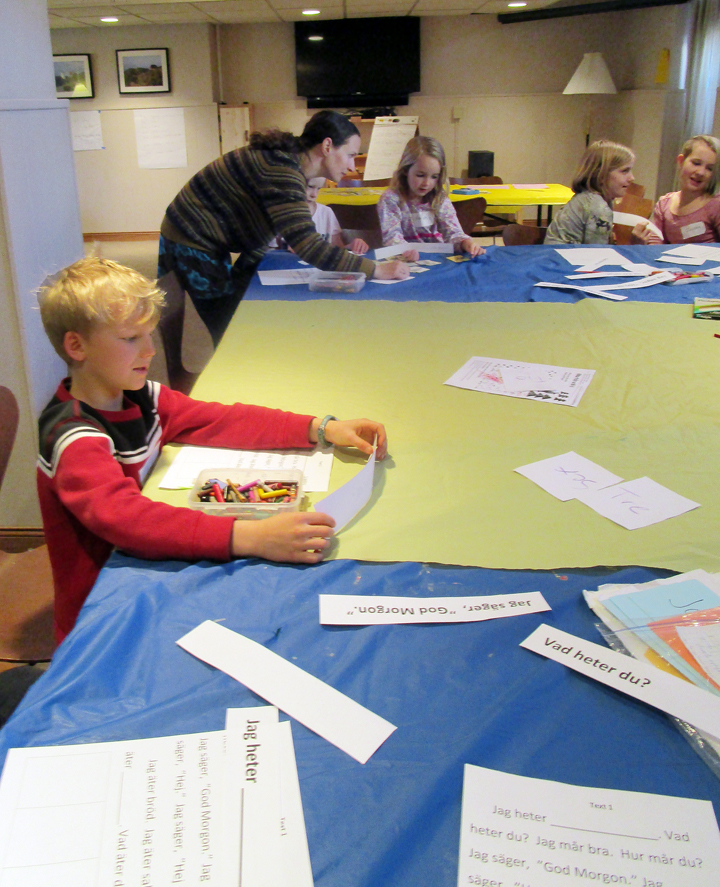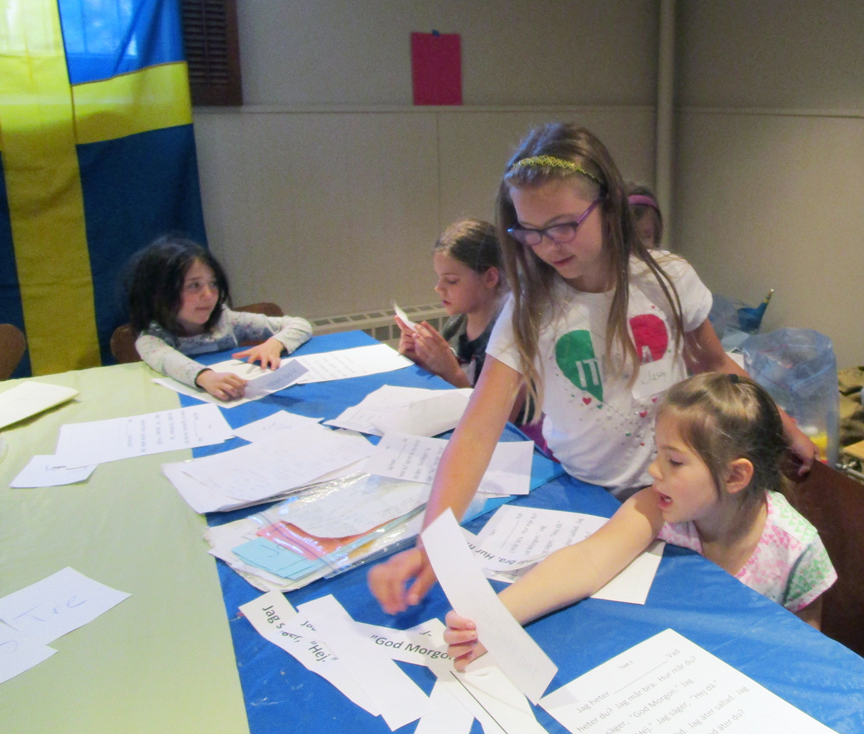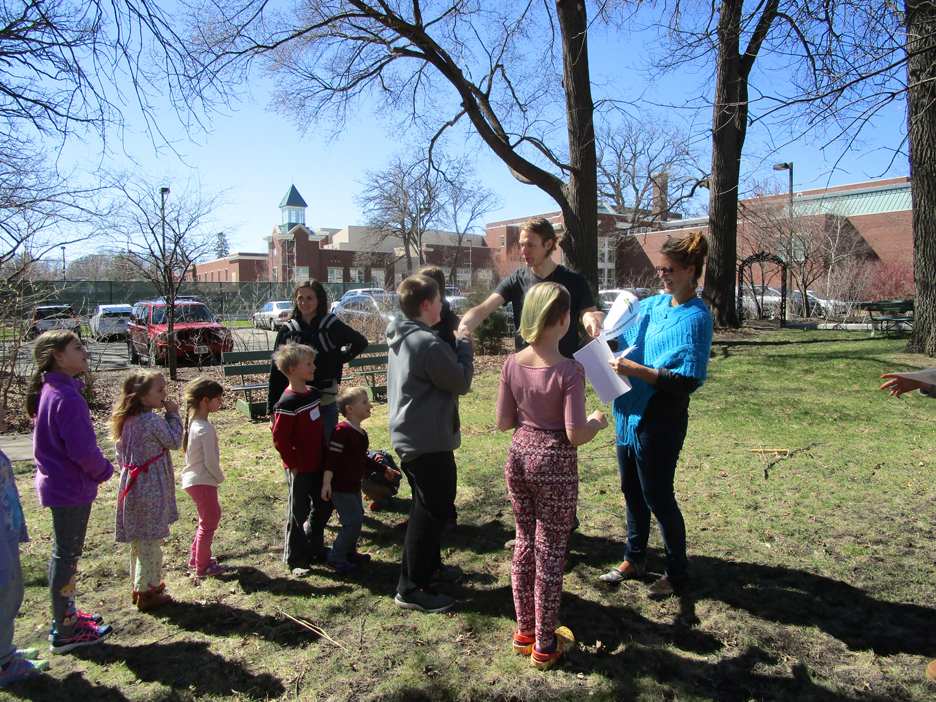Swedish Day Camp
Home-schooled children in Minneapolis attend Swedish day camp
-
 Karl worked on his reading lesson at the Swedish day camp for home-schooled families in the Twin Cities in April. Active learning strategies and a framework of multiple intelligences were used in lesson planning so participants worked as partners, in small groups, and moved around the site.
Karl worked on his reading lesson at the Swedish day camp for home-schooled families in the Twin Cities in April. Active learning strategies and a framework of multiple intelligences were used in lesson planning so participants worked as partners, in small groups, and moved around the site. -
-
A few years ago, Tesha Pettit used to live in East Central Minnesota's Isanti County, called “America’s Dalarna” due to all the Swedish immigrants who settled there in the mid 1800s to 1920s. Pettit brought her daughter to the annual Swedish day camp program there, even after the family had moved to Minneapolis. Now she is home-schooling her children, and is active in a couple independent schooling cohorts in the Twin Cities. She longed for that Swedish language opportunity when the Isanti County program went on hiatus and wondered if she could organize a day camp experience for her new home-school colleagues and their children.
-
 In the foreground Josey helped Thalia read a sentence in preparation for learning a story in Swedish. Maya and Mari worked as partners to read to each other.
In the foreground Josey helped Thalia read a sentence in preparation for learning a story in Swedish. Maya and Mari worked as partners to read to each other. -
-
In early April, 16 children ages 3 to 12, gathered at the Danish American Center (DAC) in Minneapolis for language classes, crafts, outdoor games, songs and cultural learning. Parents with pre-schoolers remained onsite and learned along with their children.
Teachers were Sigrid and Karl-Anders, who had previously worked together through the Concordia Language Village Swedish program. They divided the group according to pre-school and school-age learners, and taught according to development levels. Some whole group activities included song games traditional for midsommar, kubb, and some songs and games to help everyone get acquainted.
At the end of the program, all the participants made their way through a “reflection” receiving line. The children each spoke about something they learned, shook hands with the adults, and got their certificate of attendance.
The DAC served as an inviting location for this opportunity, with comfortable indoor spaces and plenty of outdoor areas for games and the final receiving line. The building is also the home office for the Swedish Council of America (SCA), so when Karl-Anders arrived to work at the Swedish day camp, he merely had to walk a few steps from his part-time job at the SCA.
Text and photos by V. S. Arrowsmith -
 At the end of the Swedish day camp, all the participants made their way through a “reflection” receiving line.
At the end of the Swedish day camp, all the participants made their way through a “reflection” receiving line. -
-
